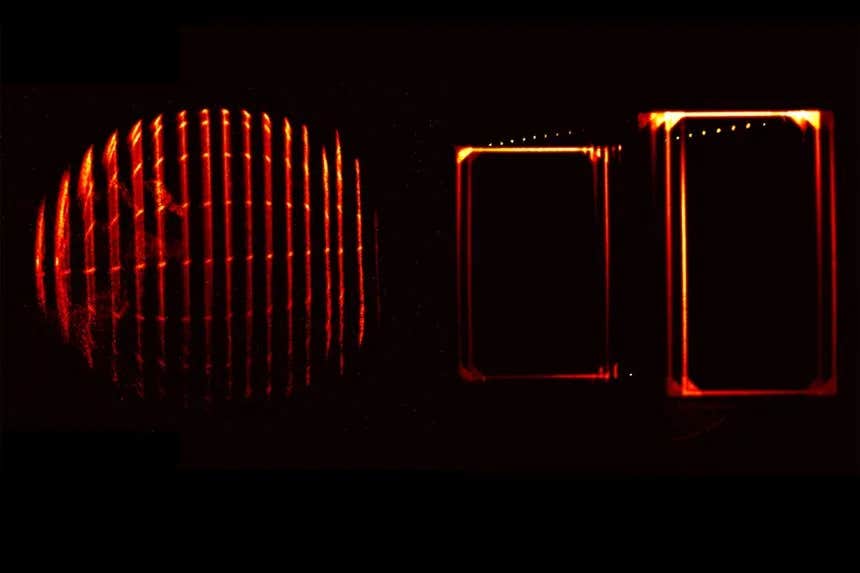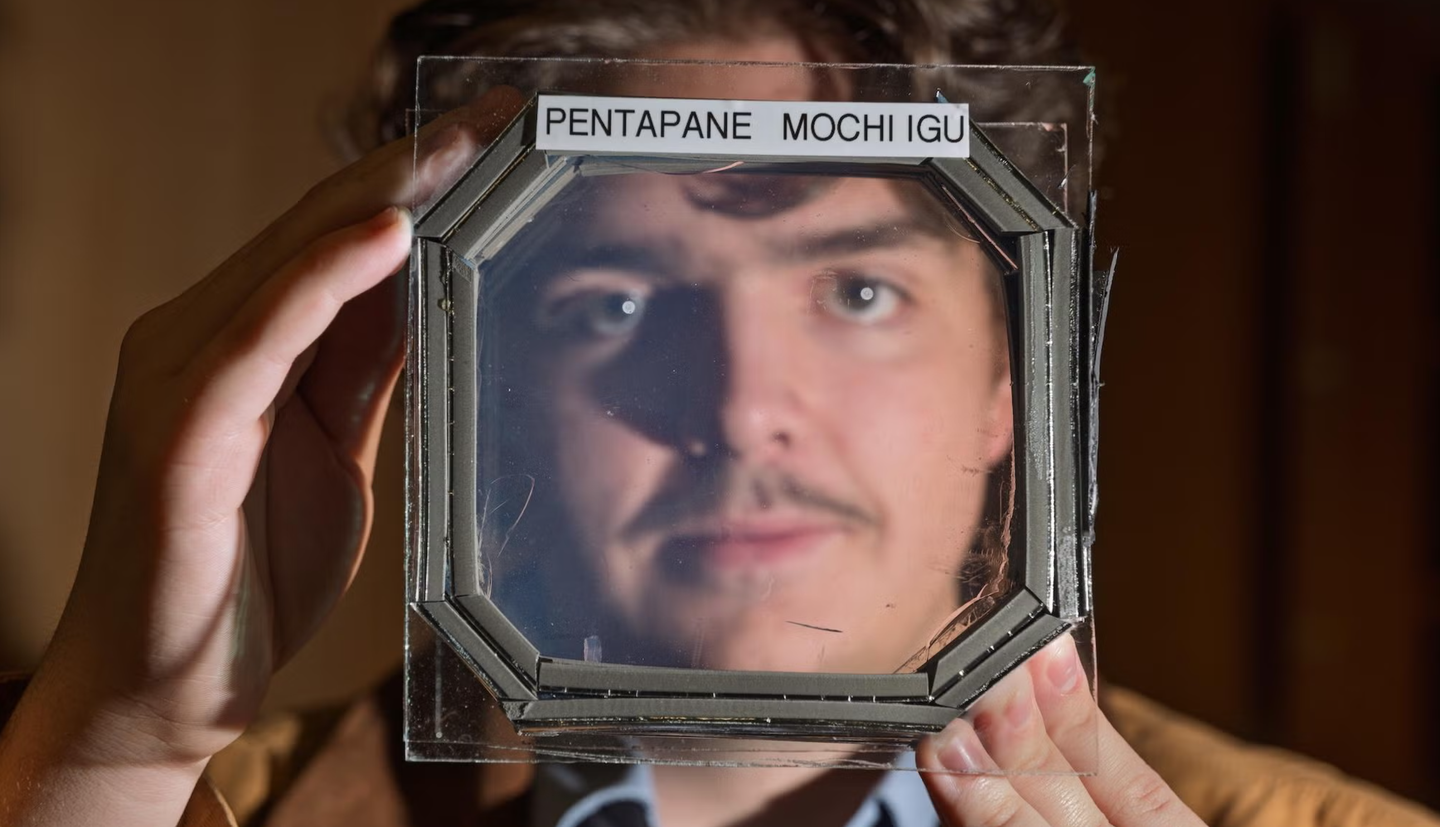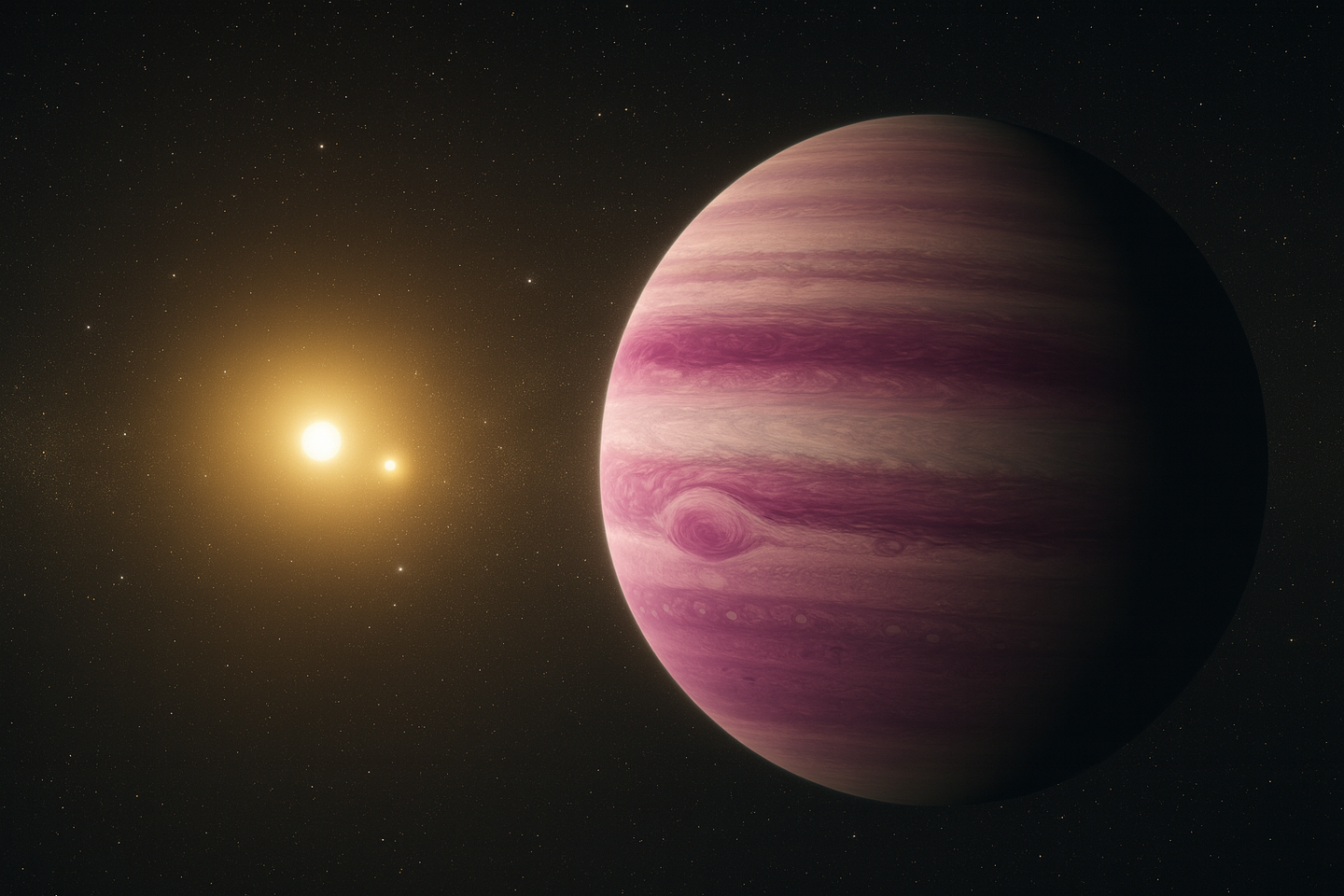Global first: Scientists reproduce visual illusion predicted by Einstein’s theory of relativity
Physicists use lasers and ultra-fast cameras to capture a visual illusion predicted by Einstein’s relativity theory.

Einstein’s special relativity made visible. (CREDIT: TU Wien)
Fast-moving objects don’t always look the way you’d expect. When something travels near the speed of light, strange things happen—not just to time and space, but also to how the object appears. For decades, scientists have predicted that a cube or a sphere zipping by at incredible speed wouldn’t look shorter or stretched. Instead, it would look rotated, as if someone had twisted it in space.
This strange twist in perception is known as the Terrell-Penrose effect, named after physicists James Terrell and Roger Penrose. The idea dates back to 1959 when both men, working separately, reached the same surprising conclusion.
They found that the Lorentz contraction—a key part of Einstein’s theory of special relativity—doesn’t actually change how a fast object looks in a photograph. Instead, the object seems rotated. A sphere, for instance, still looks like a sphere, just viewed from a different angle.
Now, thanks to a collaboration between TU Wien and the University of Vienna, scientists have finally seen this effect in the lab for the first time.
A strange effect predicted decades ago
In 1924, physicist Anton Lampa wondered how a fast-moving rod would appear to an observer. That question lingered for years. It wasn’t until 1959 that Terrell and Penrose realized that taking a picture of a fast object wouldn’t show it shortened or squashed. Instead, because of how light travels, the object would look like it was rotated.
This happens because light from the object’s far side must travel a longer distance than light from the near side. So, even though both beams hit your eye or camera at the same moment, they left the object at different times. The object wasn’t in the same place during both emissions, which twists the visual appearance.
For this rotation to appear correctly in a photo, exposure time must approach zero. That’s not something most cameras can do. The math shows that these distortions cancel out the actual Lorentz contraction. The result? The object looks the same size as if it were still—just seen from an odd angle.
Related Stories
The first-ever lab recreation
Peter Schattschneider, a physicist at TU Wien, and a team of researchers finally found a way to recreate this century-old prediction in a lab. “Suppose a rocket whizzes past us at ninety per cent of the speed of light,” he explains. “For us, it no longer has the same length as before it took off, but is 2.3 times shorter.”
This is the Lorentz contraction, one of the most famous results of Einstein’s special relativity. However, Schattschneider says this shortening cannot be captured in a photograph. “If you wanted to take a picture of the rocket as it flew past, you would have to take into account that the light from different points took different lengths of time to reach the camera.”
To show how this works, the team used ultrashort laser pulses and an ultra-fast camera setup. These tools created a virtual environment in which light behaved as if it moved at just 2 meters per second, instead of nearly 300 million meters per second. This massive slowdown allowed the team to capture snapshots of light interacting with a moving object, something normally too fast to see.
Victoria Helm and Dominik Hornof, two students who carried out the experiment, explained how they did it. They moved a cube and a sphere around the lab while laser pulses bounced off the objects. A camera recorded those flashes, each capturing a tiny moment of time. “If you get the timing right, you can create a situation that produces the same results as if the speed of light were no more than 2 metres per second,” the students said.
Each image showed how light reflected from different parts of the object at different moments. These images were then stitched together to mimic a real-time photo taken at near-light speeds.
The rotating cube and the undistorted sphere
The experiment showed exactly what Terrell and Penrose predicted. When the images were played back, the cube looked rotated. A sphere, on the other hand, still appeared round. “A cube appears twisted, a sphere remains a sphere, but the North Pole is in a different place,” said Schattschneider.
This confirmed that the visual rotation completely compensates for the Lorentz contraction. Even though the object was reshaped in the experiment—a cube compressed into a flatter cuboid, and a sphere into a disk—the photos looked like the object was unchanged in shape but rotated.
The key trick was to apply artificial Lorentz contraction. The cube was reshaped with an aspect ratio of 0.6 to mimic movement at 80% the speed of light. The sphere was squeezed to resemble an object moving at 99.9% the speed of light. Despite this, the final images still looked like natural, undistorted shapes seen from odd angles.
This idea of seeing things differently because of light travel time may seem strange, but it’s already part of how we look at stars and galaxies. Astronomers deal with light from far-off objects that left them millions of years ago. In this experiment, that principle was used up close and in real time.
A blend of art and science
The project had a surprising source of inspiration—art. Years ago, artist Enar de Dios Rodriguez worked with TU Wien and the University of Vienna to explore ultra-fast photography. That art-science partnership led to the techniques used in this breakthrough.
High-speed photography isn’t new. In 1878, a famous series of images captured a galloping horse. That same method led to photographs of supersonic shockwaves. But today, CMOS technology and gated cameras offer more speed and accuracy. Some cameras can capture billions of frames per second or combine short exposures with longer gaps to make complex visual effects.
One such method, used by a group called SEEC Photography, allows viewers to see light as it reflects off an object, frame by frame. By using this method, the Vienna team simulated how a laser pulse would move across a still object—and then extended it to mimic the effect of the object itself moving at high speed.
Each laser pulse was timed to hit a different part of the object as if light were crawling slowly over it. These flashes were pieced together into single images or animated clips. The result was a moving object that behaved exactly as predicted by theory, making the Terrell-Penrose effect finally visible.
This rare blend of science and art gave new life to a century-old idea. The results were published in Communications Physics, helping to explain an effect that even physicists find hard to grasp.
“We combined the still images into short video clips of the ultra-fast objects. The result was exactly what we expected,” said Schattschneider. The cube seemed twisted. The sphere looked right but shifted. And a prediction made in 1959 finally had its day in the lab.
Note: The article above provided above by The Brighter Side of News.
Like these kind of feel good stories? Get The Brighter Side of News' newsletter.



